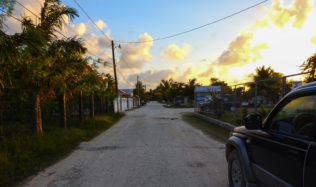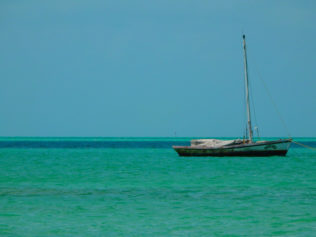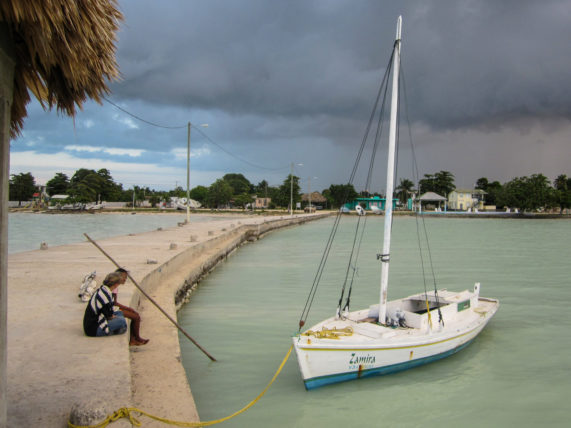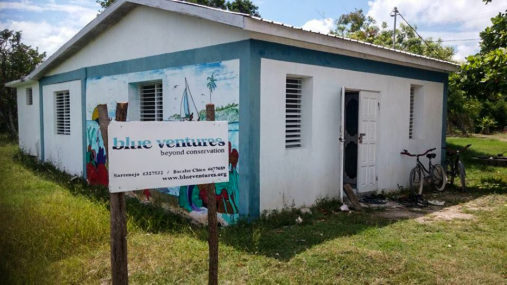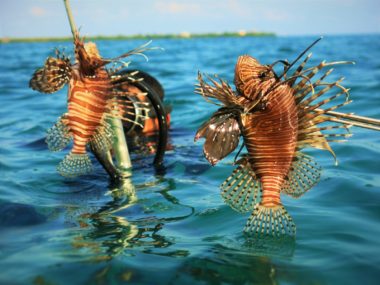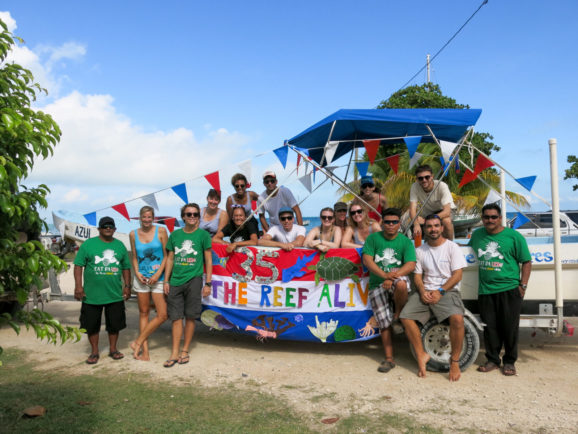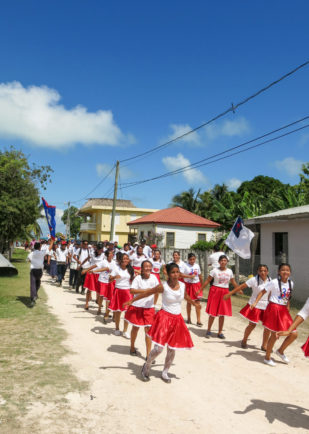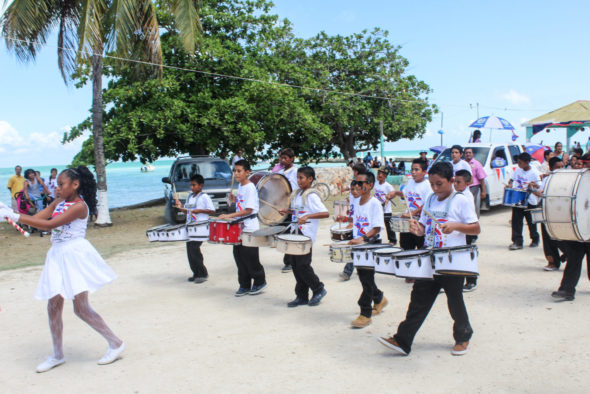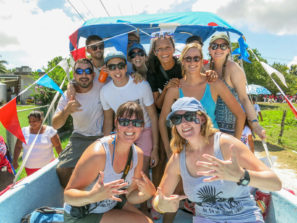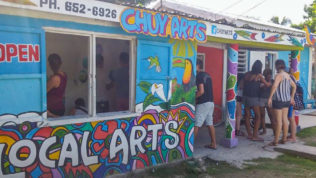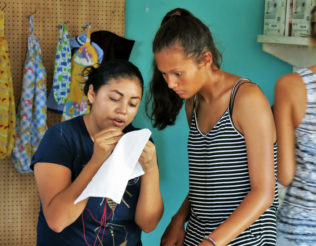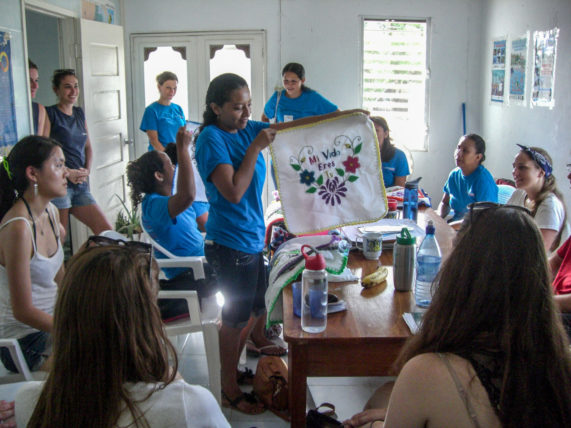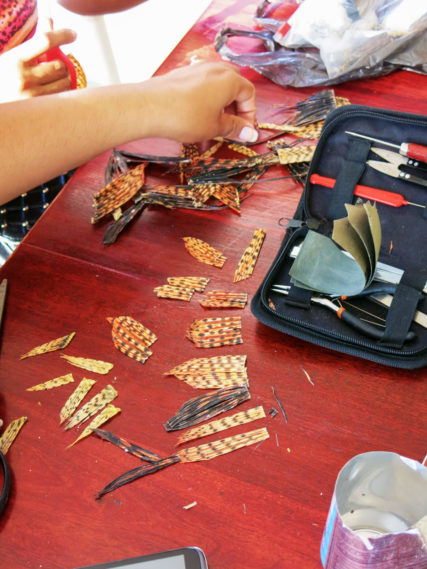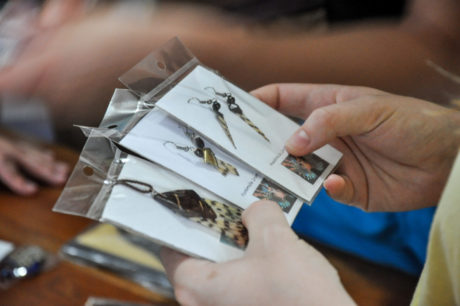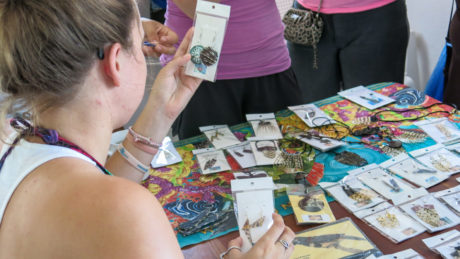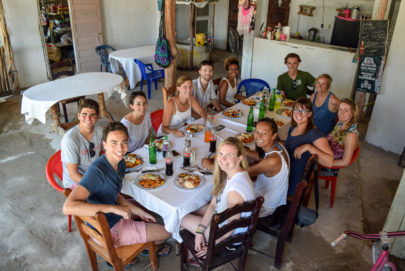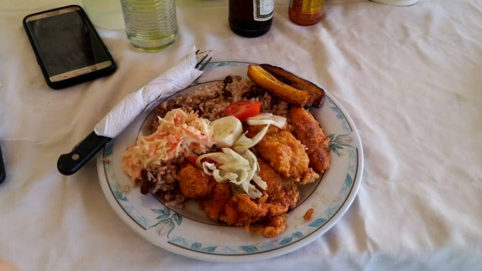Sarteneja. This place is the epitome of a rural Latin American fishing village.
It is a community of early risers, where churches outnumber bars and where the cars driving through the streets each day can be counted on one hand. There is something of the Wild West about the place: one long, straight boulevard runs from west to east, the distance blurred by the throbbing heat haze and by the dust, continually whipped up by the pleasant coastal breeze. The persistent chatter of crickets is only interrupted by the friendly smile and ‘buenos días!’ of the occasional passer-by, while scrawny dogs lie panting in the shade of almond trees, lazily watching the day go by.
It is easy to understand why many in the village community are dependant on the resources offered by the surrounding turquoise ocean.
Despite its small size, Sarteneja, whose name is derived from a Mayan word meaning ‘water between the rocks’, is the largest fishing community in Belize. Fishing is the fifth most important industry for this tiny nation, which is why the health of coral reefs and fish stocks is not just an ecological issue, but a social and economic one as well.
As the number of fishermen continues to increase, and more pressure is put on their dwindling marine resources. Sarteneja urgently needs new, sustainable approaches to fishing, fresh fisheries management ideas, and alternative sources of income for its citizens.
That’s where Blue Ventures comes in, developing markets for sustainable fisheries like lionfish and supporting the development of alternative livelihoods for coastal communities like Sarteneja.
I’m wary of making this sound too much like an advert for Blue Ventures, so I’ll move on to what I have actually been up to during my time in Sarteneja.
As I arrived on the expedition a couple of days late, with a mammoth journey behind me, I was bracing myself for a baptism of fire. So on my first morning I was surprised to find myself… painting. The Blue Ventures office had turned into an art studio for the day, as staff and volunteers set to work drawing, cutting, gluing and painting in preparation for the Belize Independence Day parade.
Most Sarteneja families came to the park to watch the ceremony and the beginning of the parade, including the wonderful homestay family that I was staying with.
This parade was a fantastic experience. We had decked out the Blue Ventures boat, Azul, in the national colours of Belize, along with our artistic masterpieces from the previous day. The day began with a ceremony at the waterfront, including traditional drumming from local schoolchildren, traditional singing and a blessing of the parade from a local pastor.
After the ceremony the convoy got going, so we boarded the boat for a tour of the town. Blaring speakers and rattling drums provided the rhythmic soundtrack to the day, while everything from cars to telephone poles were adorned with the Belizean red, white and navy.
All of a sudden, this sleepy little town had burst into life.
The rest of my time here in Sarteneja has been far more tranquil, mainly made up of group training sessions on reef ecology, beginners’ Spanish lessons, and practicing species identification of countless fish for all the underwater surveying to come in the weeks ahead.
We also got a taste of some of the real work Blue Ventures does, beyond teaching a group of clueless volunteers the difference between a goatfish and a yellowtail snapper. We got a chance to visit and learn from local entrepreneurs and groups working to support their families with fishing-independent livelihoods.
We visited Chuy, a talented local artist, and then ‘Las Sartenejeñas’, a women’s co-operative making and selling high-quality, textiles, clothes and woven products.
Next was the Belize Lionfish Jewelry group, another women’s group supported by Blue Ventures, who specialise in crafting beautiful, handmade jewellery from the fins, tails and spines of the invasive lionfish.
While fishermen are increasingly catching lionfish for personal consumption or for sale to restaurants, retailers face the common misconception that lionfish are poisonous (only the spines contain venom, the fillet is delicious and completely safe!)
As you may have heard, the presence of invasive lionfish is extremely bad news for the reefs of the Caribbean, as they devour every small fish and invertebrate that will fit in their mouths. With no natural competitors or predators here, they are flourishing, while the rest of the reef struggles to deal with the unprecedented threat that they pose.
The Belize Lionfish Jewelry group helps to brings financial independence to Belizean women, while increasing the commercial value of lionfish, and encouraging fishermen to target it, which helps relieve the pressure on other reef species, as well as providing a beautiful and unique product.
That’s killed about five birds (or should I say lionfish?) with one stone!
Pleased with our purchases, we then headed off to Pablito’s bar and restaurant, one of the first places in Belize to serve lionfish, to tuck into a special lunch. Sure enough, every one of us loved it and there wasn’t a single scrap left on our plates by the end of the meal!
My time in Sarteneja has already been a real eye-opener. Not only have I been able to delve into a new culture and experience life at a different tempo, but I have also seen first hand just how necessary sustainable, alternative livelihoods are for communities like this.
It has confirmed in my mind the importance of community-based conservation projects, and I am pleased to know that the data I will be collecting for the rest of my expedition will contribute to the sustainable management of the reef, and consequently help the people who rely on it every day for their food, their income, and their culture.
Join us for a marine conservation expedition
Keep up to date with our publications from Belize
Discover tasty lionfish recipes and more at Eatdalion.bz


